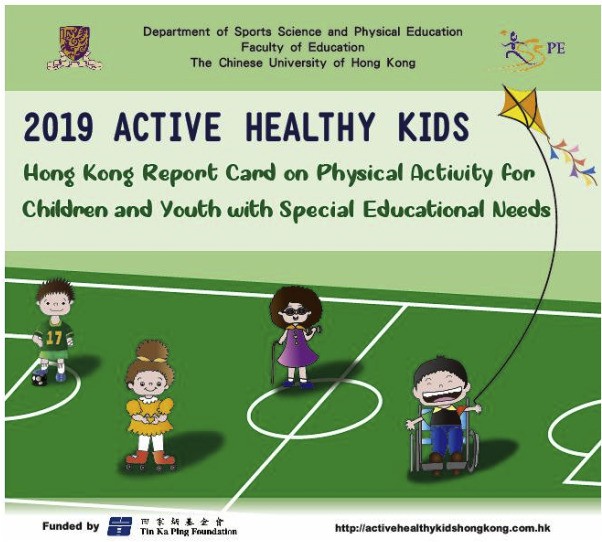HALO Director Dr. Mark Tremblay is a co-author on a paper, “Results from Hong Kong’s 2019 Report Card on Physical Activity for Children and Youth with Special Educational Needs,” that was recently published in the Journal of Exercise Science and Fitness. Citations details and a summary of the paper are below.
Congratulations Mark and team!

Sit, C. H.-P., Yu, J. J., Huang, W. Y., Wong, M. C.-S., Sum, R. K.-W., Tremblay, M. S., & Wong, S. H.-S. (2020). Results from Hong Kong’s 2019 report card on physical activity for children and youth with special educational needs. Journal of Exercise Science & Fitness, 18(3), 177–182. https://doi.org/10.1016/j.jesf.2020.05.004
Abstract
Background. Objective: The Active Healthy Kids 2019 Hong Kong Report Card on Physical Activity for Children and Youth with Special Educational Needs (SEN) provides evidence-based assessments for nine indicators of physical activity behaviors and related sources of influence for 6- to 17-year-olds with SEN in Hong Kong. This is the first Report Card for this population group in Hong Kong.
Methods.The best available data between 2008 and 2019 were reviewed by a panel of experts. Following the Active Healthy Kids Global Alliance (AHKGA) development process, letter grades were assigned to nine indicators (Overall Physical Activity, Organized Sport Participation, Active Play, Active Transportation, Sedentary Behaviors, Family & Peers, School, Community & Environment, and Government Strategies & Investments).
Results.Two behavior indicators (Overall Physical Activity: F; Sedentary Behaviors: D+) and two contextual indicators (School: B; Government Strategies & Investments: C-) were assigned a letter grade. The remaining indicators including Organized Sport Participation, Active Play, Active Transportation, Family & Peers, and Community & Environment were not graded due to insufficient data.
Conclusions. A majority of children and youth with SEN in Hong Kong are physically inactive and have a high level of sedentary behaviors. Schools are ideal settings to promote physical activity for this population. There is a need to develop a comprehensive surveillance system to monitor this population, assess efforts to improve the grades, and promote physical activity opportunities for children and youth with SEN.
Click here to read the full paper for free.





